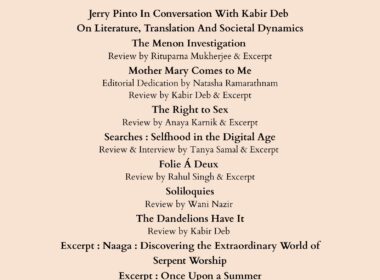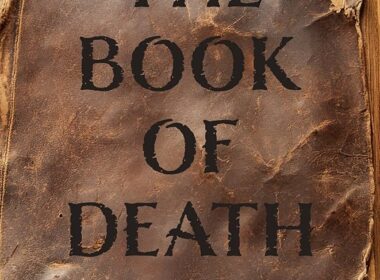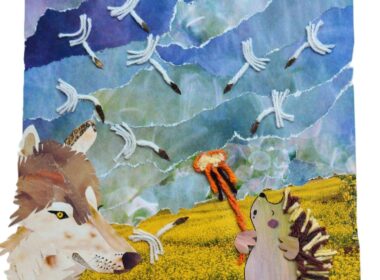Excerpt Naaga : Discovering the Extraordinary World of Serpent Worship

Image courtesy of HarperCollins Publishers India
PART 1
Naagaloka—A Quest for the Netherworlds
The Serpent in World Mythology
In the labyrinthine alleys of the ancient world’s cultural and religious corridors, serpents hold a special place. These remarkable reptiles captured the imagination of ancient peoples, who wove them into their most important myths and legends. Their ability to disappear into the earth, shed their skin as if reborn, and deliver a venomous bite made them seem connected to hidden powers and the cycles of nature. As symbols, they came to represent some of life’s biggest concepts—creation itself, ongoing fertility, secret knowledge, and the very idea of eternity.
But this brings up interesting questions—why was this animal, often feared in real life, held in such high regard, even worshipped, in so many ancient traditions? What made people see divinity and profound meaning in a creature that could also represent danger? The practice of serpent worship, known as ophiolatry, spread far and wide, showing how deeply these creatures impressed the human mind.
We see powerful serpent symbols repeated across cultures—consider the Ouroboros, the image of a serpent eating its tail, in a way representing the endless cycle of time, or think of the familiar image of two serpents coiled around a staff, often linked to healing, balance, and hidden knowledge. What can these varied myths and
symbols tell us about how ancient people saw the world and the powerful forces within it? This chapter explores these fascinating serpent stories from different parts of the globe to understand their significance.
Jörmungandr: Serpent of the North
In Norse mythology, the serpent is far from a heroic figure. Jörmungandr (pronounced yorr-mun-ganthr), the world serpent, plays a crucial role in the mythological landscape, embodying chaos and destruction. Born of the mischievous god Loki and the giantess Angrboda, Jörmungandr was one of three monstrous children destined to bring turmoil to the world. Loki hid the serpent in a cave alongside its siblings—Fenrir, the wolf, and Hel, the ruler of the dead.
However, Jörmungandr’s rapid growth soon became impossible to conceal, as its tail began to extend beyond the confines of the cave. When this monstrous creature was discovered, Jörmungandr was banished to the sea, where it continued to grow until it encircled the entire earth, its tail clenched between its jaws. From its watery prison, the serpent’s writhing was said to stir up the most fearsome tempests, embodying the chaotic forces of nature.
Jörmungandr is portrayed as a key villain in Norse mythology, particularly as the arch-nemesis of Thor, the god of thunder. Their enmity is one of the most iconic in Norse legend, culminating in their epic battle during Ragnarök, the end of the world.
The encounter between Thor and Jörmungandr is not just a physical confrontation but a clash of cosmic forces—order versus chaos, the divine versus the monstrous. So, while Marvel’s Thor is battling aliens and saving the universe, his original Norse counterpart had his hands full with a giant, grumpy sea serpent.
Thunder Gods and Chaos Serpents
Parallels can be drawn between the battle of Jörmungandr and Thor with other ancient narratives, such as the Vedic tale of Vritra and Indra. Vritra, like Jörmungandr, is an enormous serpent embodying chaos and drought, while Indra, the god of thunder, must slay this serpent to restore balance. Interestingly, Typhon, a monstrous giant with serpentine features, was a significant figure in Greek mythology. His battle with Zeus (the thunder god) represented a struggle between the forces of chaos and order. These recurring themes highlight an ancient symbolic pattern—thunder gods battling serpents of chaos to restore cosmic balance.
Egyptian Serpents and Solar Cycles
The sacredness of serpents in ancient Egyptian religion reflected their role in the cycle of life, death and rebirth, emphasizing their importance in both the material and spiritual realms.
The serpent Bai was specifically depicted as the guardian of the doorways of Egyptian tombs, which were seen as the gateways to the afterlife. Bai’s role underscored the serpent’s association with immortality and protection in the journey to the afterlife. This role extended to all Egyptian temples, where sacred serpents were often housed, symbolizing eternal life and divine protection.
The Sun and the Snake demon
‘Ra’ was the sun-god of ancient Egyptian religion who embodied the daily cycle of life (day), death (night) and rebirth (sunrise). His journey from east to west, symbolizing the sun’s movement across the sky, and his daily rebirth at dawn were metaphors for the perpetual cycles of existence. During this journey, Ra faced
Apophis, a formidable serpent representing chaos, who sought to obstruct his progress.
This narrative parallels the Hindu myth of Surya and Rahu. Surya, the sun god in Hinduism, mirrors Ra in his role as the source of life and the regulator of day and night. Rahu, a half-serpent asura, periodically obscures Surya (and the moon) during eclipses. According to the puraanas, Rahu was a serpent who drank the elixir of immortality (amrita) but was beheaded by Vishnu. His head, a celestial entity, chases the sun and moon across the sky, causing eclipses when he catches them.
The Cosmic Egg
In the dusty annals of Egyptian myth, we encounter another serpentine deity, Kneph. Revered as the divine architect of the universe, Kneph is often depicted clutching an egg in its jaws. This imagery, rich with symbolism, entwines the serpent—symbolic of the mysteries of creation—with the egg, representing the primordial elements from which life springs.
Similarly, Apophis, the enemy of the Egyptian sun god, Ra, was believed to have emerged from the primordial waters of Nu, the cosmic ocean of chaos. This primordial chaos concept aligns with the idea of the cosmic egg in other creation myths, where the universe emerges from a state of primordial disorder or nothingness.
The cosmic egg, or mundane egg, is a timeless symbol threaded through the myths of countless cultures, from the Proto-Indo- Europeans to the ancient Egyptians. This primordial concept often centres around an egg from which the universe is either born directly or through a primordial being who subsequently shapes existence. The egg may rest upon the primordial waters of the Earth, signifying the fertile chaos from which all things spring. According to Witzel, in many traditions, the upper half of the egg becomes
the firmament or heaven, while the lower half forms the Earth—an evocative image of celestial and terrestrial realms emerging from a unified whole.
In Orphic mythology, which is a later development within Greek religious thought, the concept of a cosmic egg is present. According to Orphic texts, the universe began from a cosmic egg, from which Phanes (the primordial deity of creation) emerged. Phanes is often depicted with serpentine features or accompanied by serpents. The egg, in this myth, represents the origin of the cosmos, and the serpent symbolizes the life-giving and transformative powers associated with creation.
In the ancient Hermopolitan tradition of Middle Egypt, this motif takes on a rich and detailed form. Here, the primordial landscape is dominated by the Ogdoad, a group of eight deities— four male gods with frog heads and four female deities with serpent heads—residing in the chaotic waters that predate the world. These gods, in their serpentine ways, bring forth a cosmic egg, the source of creation. The egg’s hatching heralds the emergence of the sun god, signified by the bloom of a lotus flower, and marks the formation of the primeval mound, the first land to rise from the waters.
The Egg, the Phallus and the Serpent
The idea of creation, spurred by the mere existence of things, marks the dawn of human reasoning. Early humans, observing the natural world, began to wonder how life began. One of the most striking phenomena was the hatching of a snake from an egg—a miracle that seemed to capture the essence of creation itself.
Naturally, the egg emerged as a primordial symbol—a quiet container of potential, suspended between life and death. In early cosmogonies, the egg often represented a dormant, unshaped universe—formless and floating—until life burst forth.
Alongside the egg, the phallus became a powerful emblem of creation, embodying reproductive energy and the active force of genesis. In ancient iconography, the phallus and serpent often appeared together—or were symbolically interchangeable. Both evoked fertility, continuity and the mysterious forces that pulse through all living things.
The entwining of the serpent and the egg reveals a doctrine of reciprocal principles found across early mythologies. The egg represents the latent, passive potential of the universe; the serpent, with its kinetic motion and regenerative power, symbolizes activation and renewal. Together, they embody the rhythmic interplay of opposites—life and death, chaos and order, the seen and the unseen. This symbolic pairing lies at the heart of many ancient cosmologies, reflecting the dynamic balance that sustains the cosmos.
Excerpted with permission from Naaga : Discovering the Extraordinary World of Serpent Worship by K. Hari Kumar published by HarperCollins Publishers India 2025
K. Hari Kumar is an accomplished Indian author and screenwriter, known for his captivating narratives that delve deep into Indian folklore and regional mythology. With nine books to his credit, he has garnered widespread acclaim, particularly for his popular works, Daiva and India’s Most Haunted. The latter was celebrated as a must-read and earned a prestigious spot in HarperCollins India’s list of Hundred Best Books by Indian Authors.
Beyond his literary endeavours, K. Hari Kumar is also an active screenwriter and filmmaker. His novel, The Other Side of Her, was successfully adapted into the acclaimed Hindi language web series, Bhram, further showcasing his versatile storytelling prowess.
Hari is also a sought-after speaker, having been invited to prestigious events like the Bangalore Literature Festival and Times Literature Festival, and featured on popular podcasts such as The Ranveer Show. He hosts his own podcast on Indian occult, spirituality and sacred narratives, The Fourth State.





